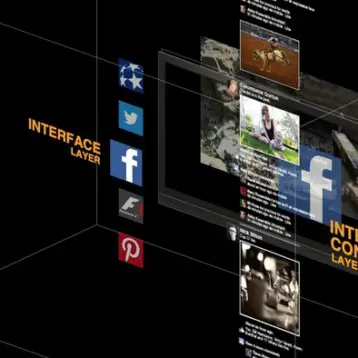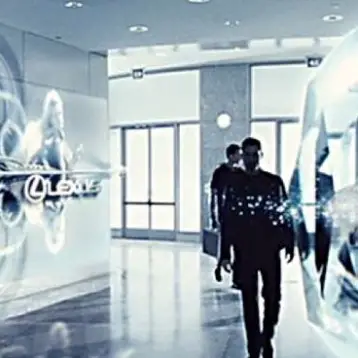|
“There is going to be an evolution here, and it will take a little bit of time, but it is similar to the high definition television (HDTV) transition,” says Mitsubishi’s Frank DeMartin. “With HD, there was no content at all. Here we have quite a bit of content available. The next wave will be on the home-video front.”
By the end of the year, more than 1 million 3-D ready HDTVs, primarily from Mitsubishi and Samsung, will be used in U.S. homes. These sets can display standard HD video and be connected to 3-D sources. Mitsubishi’s newest 3-D ready, 65-inch LaserVue set is planed to be released to the market this summer, with a 73-inch model to follow.
In June, Mitsubishi announced a 3-D content deal with PC graphics card maker Nvidia and media server company Aspen Media Products. Later this year the first releases will emerge with computer games such as Electronic Arts’ Madden NFL, Tiger Woods PGA Tour, and FIFA Soccer. A competing 3-D package from Dynamic Digital Depth (DDD) named TriDef 3D Experience, has developed a successful 3-D PC game called “BioShock”, and the 2005 Disney movie, ”The Adventures of Sharkboy and Lavagirl”.
At the InfoComm AV trade show in Las Vegas, several other companies had also shown advanced 3D display technologies. Philips, for example, announced several new 3-D displays, including a 52-inch LCD screen that does not require glasses for viewing. The first home 3-D projector developed by the Norwegian firm Projectiondesign was also shown and due to reach the market later this year.
“There is a real significant push from the creative community,” says Doug Darrow of Texas Instruments, which makes video chips for 3-D-capable digital projectors.
“It costs studios more to make 3-D movies, so there’s ‘a high level of enthusiasm’ for 3-D movies that consumers also can watch at home on high-definition (HD) TVs”, says Chris Chinnock of the recently formed 3D@Home Consortium.
|
Home video accounts for three-fourths of Hollywood’s $35.5 billion annual revenue, including $16 billion in DVD sales. “3-D is a nice driver in theaters,” Chinnock says, “but it needs a path to the home.” On the agenda for the consortium, whose members include Disney, Universal, Philips, Samsung, Sony, Thomson, and IMAX are the various types of 3-D technologies and home-delivery methods.
Old-school paper glasses used red and blue lenses to create a grainy three-dimensional image. Current experimentation focuses on home movies and games that can be viewed with sophisticated glasses (like those used in theaters) directing different images to the left and right eye. Live test broadcasts of sports events have already taken place. Also in development are 3-D displays that can be viewed without headgear at all; professional 3D technology which can be seen without specialized glasses have been around for several years but prices for the technology remain exceedingly high.
3-D has the potential “to revitalize the industry,” says Phil Swann of TVPredictions.com. Watching something in high-definition makes you feel like you are there, but watching something in 3-D HD makes you feel like you can reach out and touch what is there. Needless to say, this makes advertisers giddy with excitement as they contemplate viewers becoming more involved with the products they see on screen.
With all the new 3-D movies in the works, there will be plenty of blockbuster content available for home users. “Hannah Montana & Miley Cyrus: Best of Both Worlds 3-D Concert” which was shown in 3-D theatres earlier this year, will be the first 3-D Blu-ray Disc when it is released August 19th, 2008. Both the $36 Blu-ray Disc and $35 two-disc DVD versions come with 3-D glasses.
You can also check out our article about MIT’s Interactive 3D Virtual Environment, which you can find here. Anothervideo glasses solution recently covered by TFOT is Lumus, a new type of compact see-through digital eyeglass which was also presented at CES 2008. TFOT covered several advanced display technologies including the Perspecta Spatial 3-D System, IO2 Technology’s Heliodisplay Floating Display and more recently Sony’s XEL-1 OLED TV and electronic paper.
Additional information can be obtained at Blu-ray’s official website.











